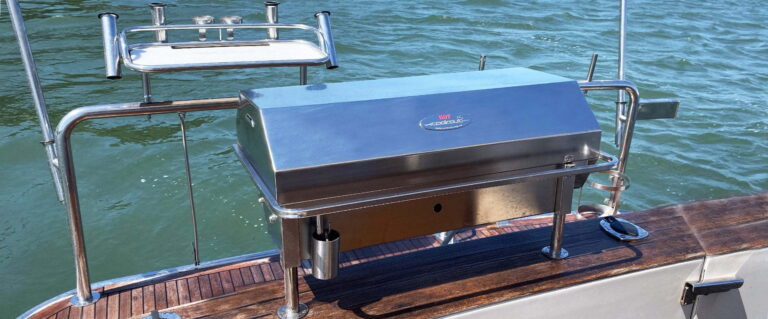How Does a Boat Speedometer Work |7 Essential Task Executed
You have used a boat severally to fish or move from one point to another severally. You have also noted that a speedometer exists on the dashboard to let you know how fast you are traveling, haven’t you? What you probably have never known, and which you seriously want to know, how does a boat speedometer work? This, of course, will let you appreciate its workings and make you better suited to handle any damages or malfunctions if and when they arise. Our goal in the proceeding segment of our discussions is to explore the working mechanism of the speedometer.
How Does Boat Speedometer Work?

The Engine is Ignited
The first step is the ignition of the engine. In most boats, you will have to insert an ignition key into the ignition slot. You thereafter turn the key mostly in the counterclockwise direction. This action will start the boat engine. At the same time, it also turns the driveshaft which further makes the propeller of the boat to start rotating.
The Vehicle’s Components are also powered
After the propeller of the boat starts to rotate, the speedometer cable which derives its power also turns.
The Magnet Rotates
The speedometer cable further spins the magnet inside the speed cup at about the same speed and direction.
Eddy currents are generated
As the magnet spins, it creates a fluctuating magnetic field right inside the speed cup. This is called the eddy current. The end result is some electric currents which are generated and operable right inside the cup as well. This eddy current hastens the rotation of the speed cup in the counter-clockwise direction mostly in an attempt to make it catch up with the magnet. The fact that the magnet and the speed cup are not at all joined together in whichever manner makes the entire process all the more effective.
A Sense of Motion is Created
By the laws of electricity, the generated electrical currents require a complete circuit for them to flow. Given that no such circuit exists in this particular case, a solution has to be found somehow. The lack of a circuit means the electric currents have to generate motion in order to dissipate the energy they possess.
The Pointer is Pulled up the Dial

They do this by triggering the speed cup to rotate in such a manner as to make it try to catch up with the spinning magnet. This faster pace of rotation is however stopped by the hairspring which means it only turns a little. In the course of this, it pulls the pointer up the dial.
More Speed Further Pushing of the Pointer
There is a direct correlation between the pace of movement of the magnet and that of the boat. The faster the boat travels, the faster the cable turns and similarly the faster the magnet spins. This results in larger eddy currents which in turn impose greater forces on the speed cup. As a result of this, the force pulls the pointer further up the dial to denote a faster speed on the whole.
How To Clean A Carburetor Without Removing It
Conclusion
You might want to refresh your knowledge of Physics a little bit to be able to completely understand every bit of the explanations we have provided above. This is because we have used some terms which are not so comprehensible by a simpler person. On the whole, though, the inner workings of a speedometer are not that complicated. It is a concept that requires only repeated references to understand fully. Best of luck in your attempt to make use of this information later!



![Ultimate Guide To Best Outboard Motor for Canoe [Top 10]](https://landroverbar.com/wp-content/uploads/2021/11/xbest-outboard-motor-for-canoe.jpeg.webp.pagespeed.ic.ABsdRjmfsE.webp)

![Best Pontoon Boat Grill For The Money 2023 [Expert Guide]](https://landroverbar.com/wp-content/uploads/2019/11/best-boat-grill-e1575015904991.jpg)